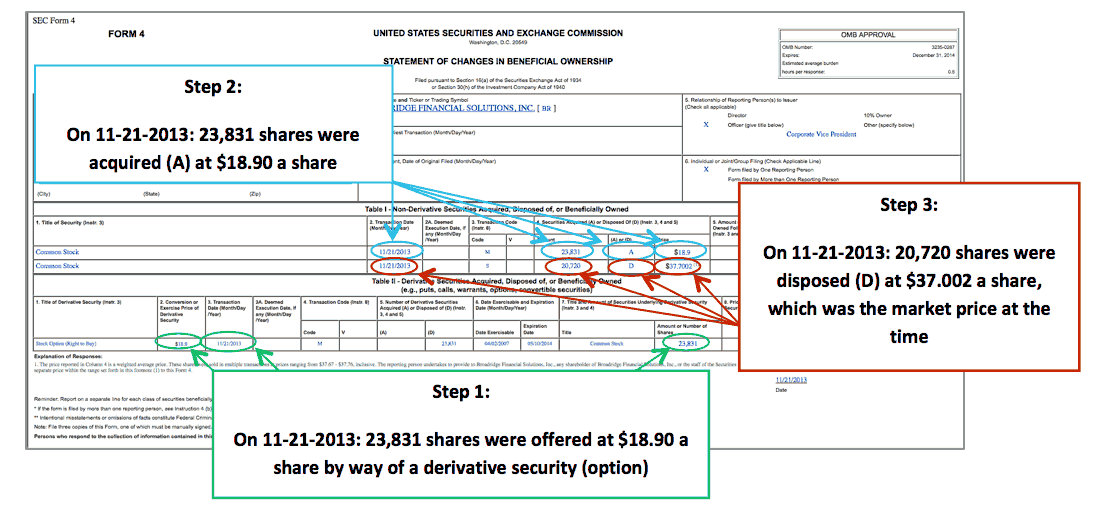From the Editor: We've been highlighting Sid's research for you again because six of his first seven recommendations are already heading higher. And his latest recommendation could climb by more than 1,000%. You've seen the charts, so today, let's look at the "sparks."
We've already reviewed a number of the seven catalysts, or "sparks," I look for in a company before I recommend it to subscribers of my Small-Cap Rocket Alert.
Industry rotation... big contracts... earnings revisions...
Finding just one of these "sparks" can lead you to extreme upside potential... But identifying two or more "lighting up" the same stock is even better.
So today I want to give you an eighth spark - one that just unveiled a potential 1,300% biotech gain for my readers last week. Then I'm going to show you how to find it on your own.
It's easy, once you know how to read this form...
"Spark" No. 8: Insider Buying... of a Very Special Kind
Insider buying and selling gets a lot of attention. But we're only concerned with a very special type of transaction...
Here's the skinny.
If you're a business owner, chances are you're intimately familiar with how your company is currently performing - and more importantly - how it's likely to perform in the future.
That's because you are uniquely tuned into every aspect of the product and management cycle. You know the "resource stack" and, chances are, exactly what's needed to make money.
Presumably, as the thinking goes, you are an insider who knows better than company outsiders what your potential is on any given day.
I've researched thousands of companies and found that to be absolutely true.
When insiders start scooping up shares, they may as well be waving a huge green flag that says "x marks the spot."
Now obviously there's a lot of gamesmanship when it comes to insider buying. You can't just take the fact that senior management is picking up shares at face value. Their actions have to be tied to something critical - like pending clinical trials results, or new patents, or even materials changes - to really be effective.
How effective?
According to Nejat Seyhun, a professor and researcher in the field of insider trading at the University of Michigan, when insiders are buying shares in their own companies, the stock tends to outperform the total market by 8.9% over the next 12 months.
Imagine doing that year after year.
An extra 8.9% may not sound like much, but it adds up very quickly.
Long story short, that was exactly the kind of opportunity I found recently for members of the Small Cap Rocket Alert family... an insider shelling out $20 million to buy shares of a small-cap biotech firm shortly before the company is scheduled to update data of an ongoing clinical trials program for one of its leading drug candidates.
The reverse is also true.
The good professor's research shows that stocks historically underperform the markets by 5.4% a year when insiders are selling.
If you remember Enron's spectacular flameout like I do, chances are you remember that insiders were dumping their shares months ahead of time faster than Miley Cyrus sheds her clothing.
That was a huge red flag at the time, yet an overwhelming number of analysts following the stock kept their "buys" in place right to the very end!
So how do you know what those in the know are doing?
Publicly traded companies have to file Form 4 paperwork with the SEC whenever insiders buy and sell stock. Pay careful attention to what those forms tell you, and you might as well be sitting in the boardroom.
Something else that's not commonly understood is that a lot of insider buying and selling occurs as part of stock options offered as compensation. Let's use a recent example from Broadridge Financial Solutions (NYSE: BR) to illustrate this:
 |
| Click to Enlarge |
What this tells us is that an insider exercised a stock option to buy 23,831 shares at $18.90 (worth $450,405.90) and then turned around and sold 20,720 shares at $37.002 (worth $766,681.44) for a tidy single-day profit of $316,275.54.
Nice work if you can get it.
Unless you dug into the numbers, the example above would appear from the outside as net-selling to the tune of $316,275.54, when in fact it was simply an insider cashing a paycheck, so to speak.
To help you differentiate between red flags and simple insider noise, try a free site such as www.secform4.com. (Note: I mention www.secform4.com merely because it was the first company that popped up in a Google search - and it's free to use. I have no relationship with the company).
If a stock you're holding has extraordinary insider buying ahead of a potential catalyst event, that could be a signal that something very exciting is on the horizon. You might want to consider adding to existing positions under the circumstances using a strategy of dollar-cost averaging so you don't have to try to time the market.
On the other hand, if a stock you're holding has extraordinary actual insider selling - and not merely selling as part of insiders paying themselves - ahead of a potential catalyst, you might considering tightening up your stops, or capturing profits on a portion of your position. Better yet, do both - run a combination of tighter stops and take profits on a portion of your position to minimize ongoing risk and exposure.
The advantage is that any profits you bank as part of this process can be tucked away or immediately redeployed to new positions with additional upside potential.
There's definitely an art to "reading" intentions from raw numbers like insider buying and selling, so don't despair if you've never tracked it before. Pick a company you're interested in and begin following the Form 4 information. Over time, the stock will "talk" to you because you will see what its senior executives do well in advance of whatever it is they "know."
I'll be back in a future column to talk about sentiment that can be very effectively combined with insider activity to produce an even more accurate picture of what the future looks like.
About the Author
Sid is the investment community's best-kept secret. Since 2009, he's served at Money Map Press as Director of Research, analyzing thousands of securities and profit opportunities for subscribers. He's an expert in identifying "alpha" potential in a wide variety of industries, but especially the small-cap sector, where he's discovered a pattern of profits that's almost foolproof.



